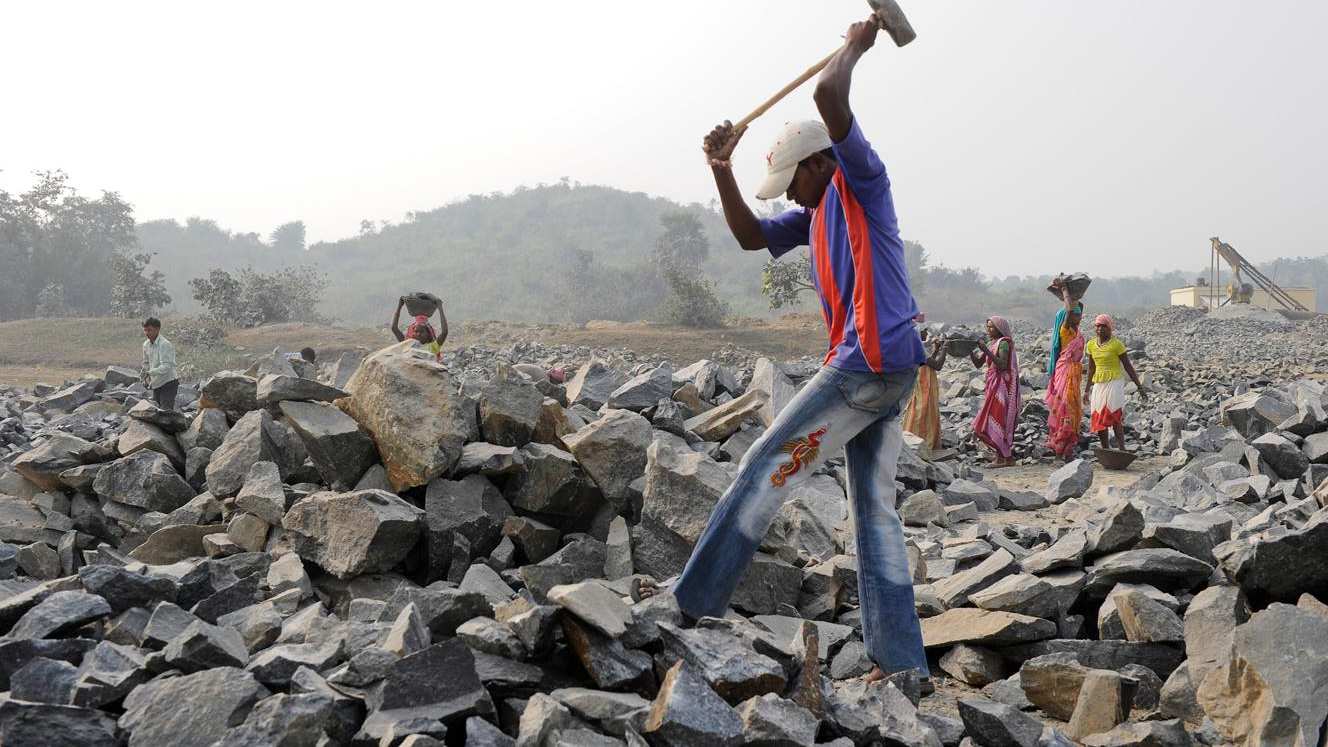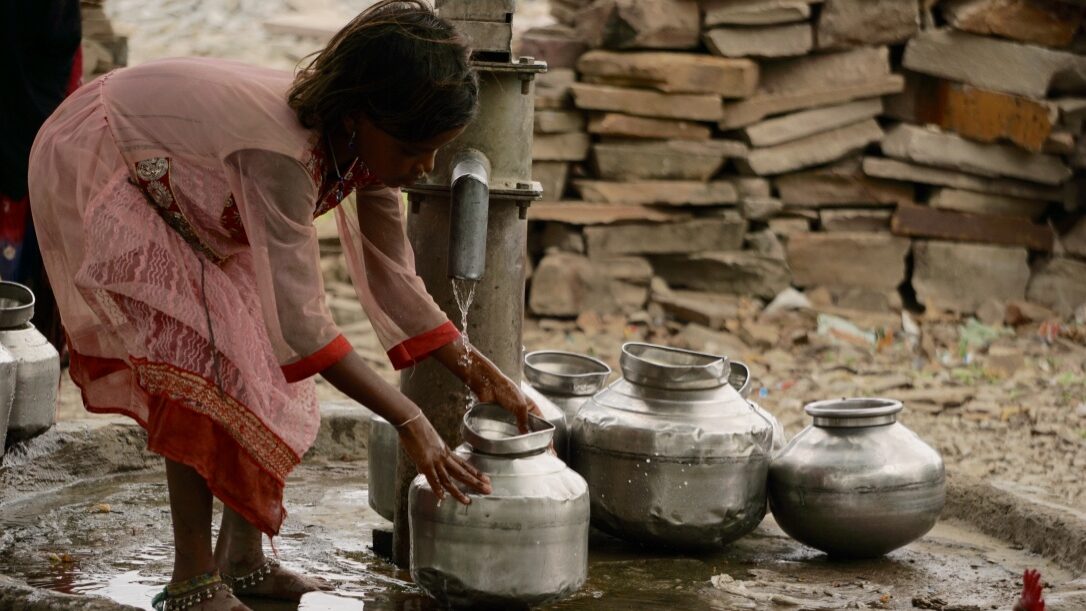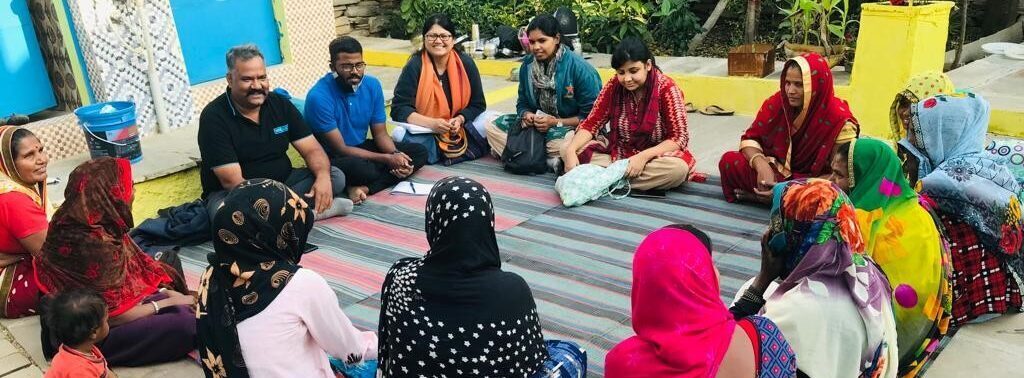Challenges in Budhpura
Combatting the problem of child labour in Budhpura, with its strong cultural beliefs and poor services in the areas of drinking water, health and education, is challenging. Most of the cutting of cobbles is done at home, including by children, which makes child labour very difficult to control. Most workers in Budhpura are migrants who belong to the unorganised sector. Community mobilisation is challenging, due to the different cultural background(s) of migrant families and the poor socioeconomic situation of the labourers.


Child labour
Families in Budhpura are fully reliant on the sandstone sector for their livelihood; there are no alternatives. Over time, cobble production has increasingly shifted from processing yards to homes. Today, while many children do attend school, they also cut cobbles outside school. These children are at high risk of dropping out of school and engaging in cobble-making full-time, especially in times of difficulty, for example during the COVID-19 pandemic or if the family breadwinner should fall ill.
It is common for children aged 14+ to engage in labour if their families are poor and/or one or both of the parents is ill (often due to silicosis) or deceased. These families are often forced to allow their (teenage) children to work. Due to the lack of alternatives in Budhpura, these children usually end up working in the sandstone sector, either at home or at processing yards and in mines.
Labour conditions of adults
Workers involved in sandstone mining and processing lack employment contracts and have no access to basic employment rights. Most workers are paid in advance by contractors. A hamlet inhabited by people who have all migrated from the same place is often linked to a single contractor and workplace (cobble yard, processing unit or mine). Due to these people’s dependency on contractors and advance payments and their limited awareness of their rights, it is very difficult for them to stand up for themselves.
Read more about the working conditions in the stone sector in Arisa’s report ‘Between a rock and a hard place‘, published in 2020
Migrant population
The population in Budhpura consists of migrant families. The migrants come from a range of areas where for generations people have been involved in mining, processing and shaping natural stone, in line with the traditional division of labour among caste groups. The migrant families in Budhpura come from Madhya Pradesh and other districts in Rajasthan where they were not able to make a living. Some migrant families have lived in Budhpura for more than 20 years, but still consider themselves temporary migrants. Other families come to Budhpura for just a few years to work in the sandstone sector. There are also seasonal migrant workers in Budhpura during the peak production season. The constantly-changing population is challenging for efforts to strengthen community structures. Child labour is common among migrant families in Budhpura, meaning that Manjari’s community mobilisers are continuously working to engage with families and sensitise them to its risks.
Lack of quality education
The area lacks quality education and teachers, has poor school infrastructure, and dropout rates are high. The poor infrastructure and parents’ low socioeconomic status has a strong influence on the educational aspirations of children and youth. It is very difficult to attract teachers who are motivated to perform their job in Budhpura. Only a few schools are adequately staffed and equipped with the facilities to provide quality education.
Health issues
Public health services and occupational health measures in the mines and quarries are insufficient. Quarry workers are especially vulnerable to work-related illnesses. Many workers in stone quarries work under unsafe conditions and suffer from silicosis, which is caused by long-term lung exposure to silica dust. It is an incurable occupational illness affecting mostly mine and construction workers.
Mines and quarries use dry drilling, which does not use water and thus exposes workers to the fine silica dust that makes them vulnerable to the disease. Wet drilling, which the Rajasthan State Human Rights Commission has recommended in a special report, can reduce risks. Attention to the prevention of silicosis, especially among employers, is far too limited. Companies don’t contribute to the financial compensation for workers affected with silicosis.
Buyers focus on low prices
Buyers – both national and international – focus on paying the lowest possible price, which is a major issue for Budhpura’s business community. The pressure to produce at the lowest possible prices leads to fierce competition, making it difficult for the more responsible businesses to compete. In addition, inflation and cost increases have a direct impact on suppliers in the lower tiers of the supply chain. “A challenge that we’re facing at the moment is the 35% increase in domestic transport costs. This includes the road tariff as well as petrol to transport the stone from the processing unit to the dispatch location,” says the manager of a company that exports sandstone slabs and cobbles.
The implementation of voluntary guidelines on responsible business conduct (OECD guidelines and UN Guiding Principles on Business and Human Rights) by international businesses in the natural stone sector is still very limited. Commitment at board level is required, along with investment in capacity to enable the implementation of due diligence throughout the natural stone supply chain.
Workers are not aware of their rights and there is a lack of worker organisation. There is also a power imbalance, with mine owners and exporters holding much more power than the unorganised workers. There are no unions active in Budhpura that bargain for better wages and working conditions for sandstone workers.
COVID-19 impact
Schools began to reopen in 2022 after two years of COVID-19 restrictions. During the pandemic, families lost incomes & livelihoods. Once schools reopened, not all families and communities agreed to send their children back to school as they needed their children to continue working to support the family. COVID-19 induced a slowdown in natural stone exports, and as a result many families returned to their places of origin. This migration during the pandemic impacted children’s learning.

